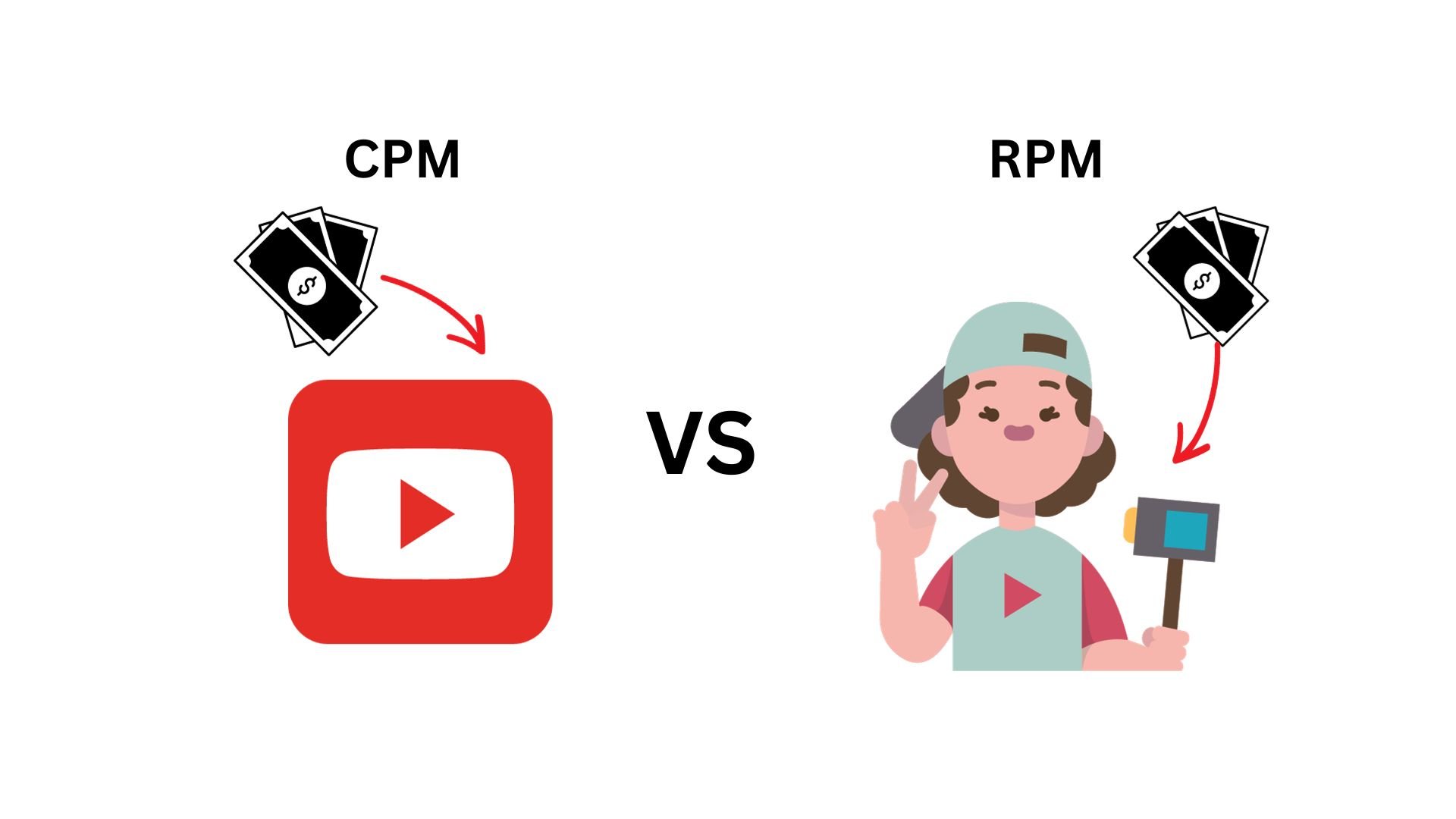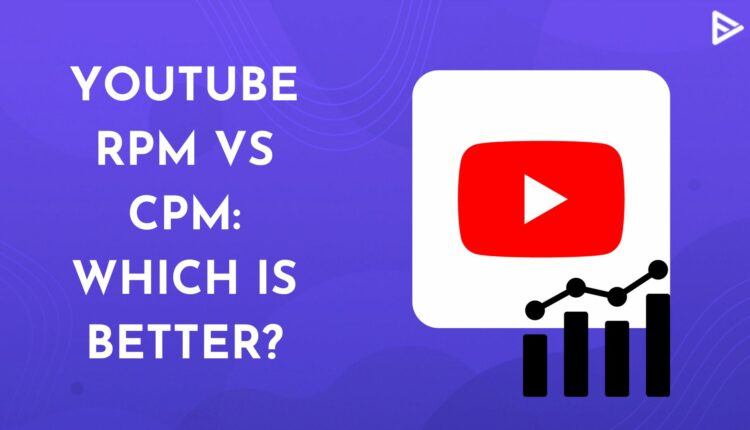CPM and RPM are essential metrics that help YouTubers and advertisers to track their revenues. It provides important insights to increase advertising revenue and shape content strategies. All content creators on YouTube have a common goal of reaching the monetization status. Let’s understand the nuances of RPM vs CPM and how it can help you see the monetary value of your content.
What Is RPM?
RPM stands for Revenue Per Mille, and it represents the revenue earned by the YouTuber per 1000 video views. Content creators are more concerned with this metric since it shows a figure relatively closer to what they will potentially make. The RPM provides YouTubers with a precise amount of how much they will be paid for running ads on their content.
To calculate the RPM, divide the total revenue gained by the total number of video views or impressions and multiply the result by 1000.
(Total Revenue/ Total Video Views) x 1000.
Explore in detail about RPM and its significance for a YouTuber.
What Is CPM?
CPM stands for Cost per Mille and represents the cost per 1000 ad impressions or views. It is the cost an advertiser will pay to YouTube for every 1000 views their ad receives. Advertisers are more focused on this metric since it indicates how much cost will it incur for the company to run an ad on a specific channel. A single ad impression or view is counted every time an ad is displayed in the video.
To calculate CPM, divide the total cost of running the ad by the total number of views or impressions and multiply the result by 1000.
(Total cost for running the ad/Number of impressions) x 1000
To understand in depth about CPM, you can refer to the detailed blog on CPM.
Difference Between RPM Vs CPM

Now since you know what is RPM and CPM, let’s know more about the key distinctions of RPM vs CPM.
1. Creator Focused Vs Advertiser Focused
RPM is a creator-focused metric, while CPM is an advertiser-focused metric.
2. Includes Different Revenue
RPM includes total revenue gained from ads, YouTube Premium, channel memberships, super chats, and super stickers. Whereas CPM focuses on revenue from ads and YouTube Premium.
3. Includes Different Sets Of Video Views
When calculating your channel’s RPM, you consider all the views from videos, including the ones that did not monetize. While CPM includes only the views from the videos that got monetized.
4. Earnings Before And After YT Share
In CPM vs RPM, you must understand that CPM reflects earnings before YouTube takes its share of the revenue generated. RPM reflects the earnings after YT takes its revenue share. Hence, it is usually lower than CPM.
5. Ad Placements
CPM helps to determine the price of ads based on where it appears. While RPM focuses on overall revenue generated by ads across the videos.
6. Bidding Process
Ad networks, such as Google AdSense, etc., use CPMs to determine the cost per impression of the ads. However, RPM doesn’t need to go through an auction process.
Conclusion
YouTube is a great platform for sharing your favorite content based on your interests while getting paid. However, to ramp up your revenues, you must know the core differences between RPM vs CPM YouTube to make engaging content for both viewers and advertisers. The key to increasing the effectiveness of these two metrics (CPM vs RPM) is to keep an eye on RPM and consistently monitor your channel’s CPM to understand its worth and optimize your content.
Frequently Asked Questions
Q1. What Is More Important For A Creator In RPM Vs CPM?
For CPM vs RPM, YouTubers and content creators should focus more on RPM since it reflects the precise amount they will earn from ads after YT takes its share.
Q2. What Does CPM Indicate For Content Creators?
Although CPM doesn’t reflect the definite amount you will make from ads, it does give you an indication of how valuable your videos are for the advertisers and your target audience.
Q3. What Earnings RPM Doesn’t Show?
RPM misses out on YouTube Merch sales, brand deals, sponsorships, and other indirect revenue streams.
Q4. Can I Boost The RPM Of My Videos?
Yes. You can always make efforts to increase the RPM from your videos with the following steps.
- Turn on ads in all formats in every eligible position.
- Aim for higher engagement in your videos.
- Diversify your revenue streams by exploring channel memberships and super chats.


